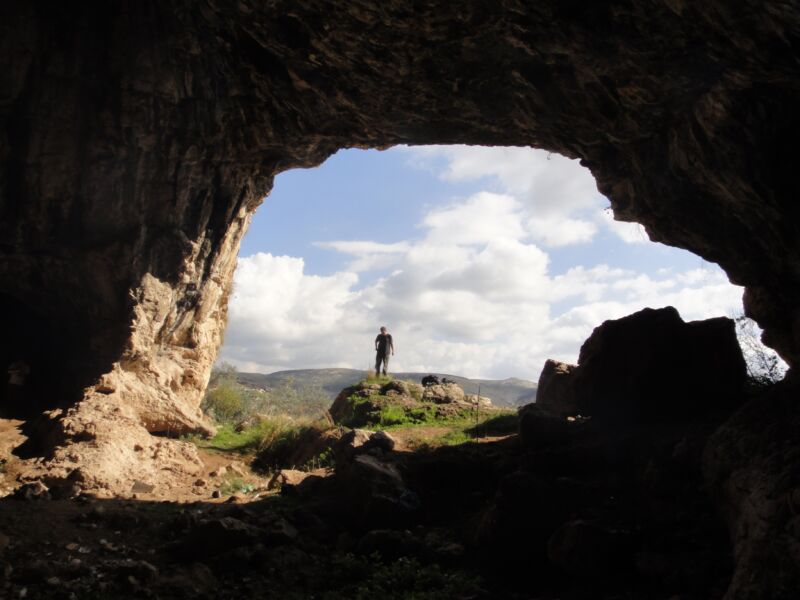
Enlarge (credit: Blinkhorn et al. 2021)
The entangled history of Homo sapiens and Neanderthals in the Levant (the area around the eastern end of the Mediterranean) just got even more complicated. Paleoanthropologists recently identified a tooth from Shukbah Cave, 28km (17.5 miles) northwest of Jerusalem, as a Neanderthal molar. That makes Shukbah the southernmost trace of Neanderthals ever found, and it also links our extinct cousins to a stone tool technology previously considered an exclusive trademark of Homo sapiens.
The Levant was one of the first areas hominins reached when they began to expand beyond Africa, and the archaeological record suggests that early expansion happened in a series of waves. At some sites, layers of artifacts show that members of our species lived there for a while before being replaced by Neanderthals, and vice versa. It was a geographical crossroads, and like all such places, its story is dynamic and complex—and it can be hard to piece together from the bits of bone and stone left behind.
Often, stone tools are archaeologists’ best clue about who lived at a site and when. There are many ways to shape a piece of flint into something useful like a scraper or a handaxe, and archaeologists recognize different cultures based on subtle differences in those methods, and the shape of the resulting tools. One approach to toolmaking, which produces distinctive stone points, is called Nubian Levallois. It’s one of several variations on a general theme of chipping flakes off a prepared stone core to produce a tool. Another variation on that theme is Mousterian technology, which is usually found at Neanderthal sites in western Europe. Nubian Levallois tools tend to turn up at sites from southern Africa to northeastern Africa.





